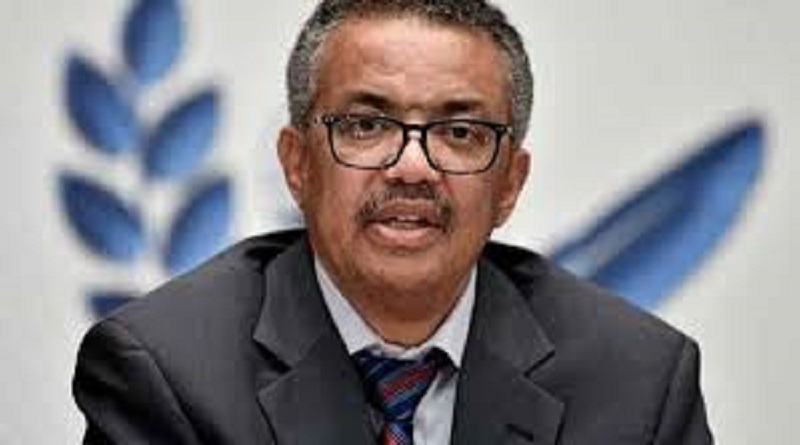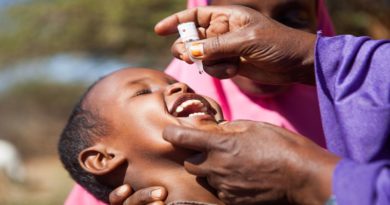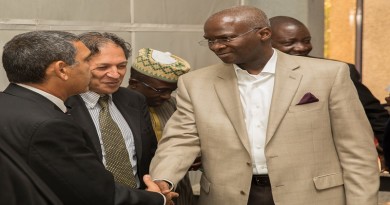WHO report reveals significant recovery in TB diagnosis, treatment in 2022
The World Health Organization (WHO) 2023 Global tuberculosis (TB) report underscores a significant worldwide recovery in the scale-up of TB diagnosis and treatment services in 2022. It shows an encouraging trend starting to reverse the detrimental effects of COVID- 19 disruptions on TB services.
Featuring data from 192 countries and areas, the report shows that 7.5 million people were diagnosed with TB in 2022, making it the highest figure recorded since WHO began global TB monitoring in 1995.
The increase is attributed to good recovery in access to and provision of health services in many countries. India, Indonesia and the Philippines, which together accounted for over 60% of the global reductions in the number of people newly diagnosed with TB in 2020 and 2021, all recovered to beyond 2019 levels in 2022.
“For millennia, our ancestors suffered and died with tuberculosis, without knowing what it was, what caused it, or how to stop it,” said Dr Tedros Adhanom Ghebreyesus, WHO Director-General. “Today, we have knowledge and tools they could only have dreamed of. We have political commitment, and we have an opportunity that no generation in the history of humanity has had: the opportunity to write the final chapter in the story of TB.”
Globally, an estimated 10.6 million people fell ill with TB in 2022, up from 10.3 million in 2021. Geographically, in 2022, most people who developed TB were in the WHO Regions of South-East Asia (46%), Africa (23%) and the Western Pacific (18%), with smaller proportions in the Eastern Mediterranean (8.1%), the Americas (3.1%) and Europe (2.2%).
The total number of TB-related deaths (including those among people with HIV) was 1.3 million in 2022, down from 1.4 million in 2021. However, during the 2020-2022 period, COVID-19 disruptions resulted in nearly half a million more deaths from TB. TB continues to be the leading killer among people with HIV.
Multidrug-resistant TB (MDR-TB) remains a public health crisis. While an estimated 410 000 people developed multidrug-resistant or rifampicin-resistant TB (MDR/RR-TB) in 2022, only about two in five people accessed treatment.
There is some progress in the development of new TB diagnostics, drugs and vaccines. However, this is constrained by the overall level of investment in these areas.
WHO reports that global efforts to combat TB have saved over 75 million lives since the year 2000. However, even more efforts are needed as TB remained the world’s second leading infectious killer in 2022.
Despite significant recovery in 2022, progress was insufficient to meet global TB targets set in 2018 with disruptions caused by the pandemic and ongoing conflicts being major contributing factors:
the net decrease in TB-related deaths from 2015 to 2022 was 19%, falling far short of the WHO End TB Strategy milestone of a 75% reduction by 2025;
the cumulative reduction in the TB incidence rate from 2015 to 2022 was 8.7%, far from the WHO End TB Strategy milestone of a 50% reduction by 2025;
about 50% of TB patients and their households face total costs that are catastrophic (direct medical expenditures, non-medical expenditures and indirect costs such as income losses that amount to more than 20% of total household income), far from the WHO End TB Strategy target of zero;
the targets set for 2018-2022 in the political declaration of the first UN High-Level Meeting on TB were not met, with only 84% of the 40 million people targeted for TB treatment reached; and only 52% of the 30 million people targeted for TB preventive treatment accessing it; and less than half of the funding targeted for TB service delivery and research was mobilized.
The 2023 UN General Assembly High-Level Meeting on TB reinforced the 2018 commitments and targets, setting out new targets for the period of 2023-2027. The new targets include reaching 90% of people in need with TB prevention and care services; using a WHO-recommended rapid test as the first method of diagnosing TB; providing a health and social benefit package to all people with TB; ensuring the availability of at least one new TB vaccine that is safe and effective; and closing funding gaps for TB implementation and research by 2027.
“We have strong commitments with concrete targets made by world leaders in the political declaration of the second UN High-Level Meeting on TB, that provides a strong impetus to accelerate the TB response,” said Dr Tereza Kasaeva, Director of WHO’s Global TB Programme. “This report provides key data and evidence on the status of the TB epidemic and a review of progress, that serves to inform the translation of these targets and commitments into action in countries. We need all hands on deck to make the vision of ending TB a reality.”
The report additionally stresses the importance of concerted action across the health and other sectors to address the social, environmental and economic determinants of TB and consequences of inaction. WHO continues to support the engagement of other sectors in the TB response, through its Multisectoral Accountability Framework. In 2022, outside of the health sector, education was the most engaged sector in TB advocacy and information-sharing, followed by the defence sector and justice sector, for TB prevention and care services, and the social development sector for patient support, including provision of economic, social and nutritional benefits.
The report emphasizes that ending the global TB epidemic requires translating the commitments made at the 2023 UN High-Level meeting on TB into real action, changing the lives and livelihoods in communities.




